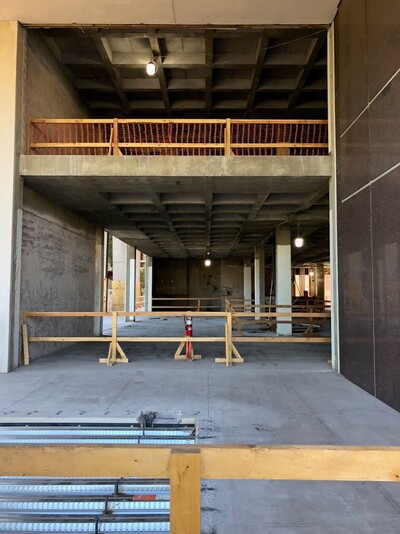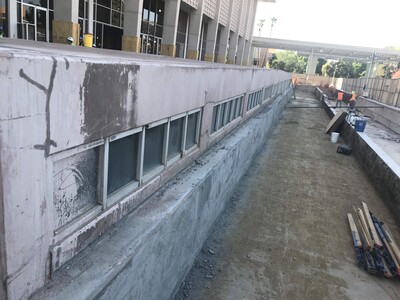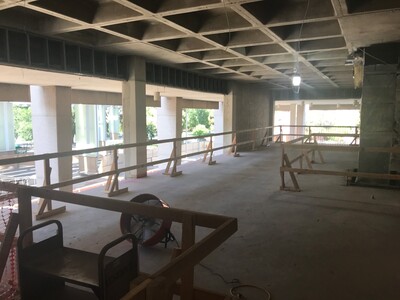For this month’s album with some small comments, see https://photos.app.goo.gl/3ozDgmdsUbWds9dh8
The main news is that it’s getting possible to see how the first and second floor will feel when we blow out the exterior walls and replace them with glass: a much brighter, airier space for all. And this was the last chance to visit the clerestory/caboose that was erected in 1989 between Hayden and the new entrance. That will be demolished starting next week, mainly at night, and it will be very noisy – concrete and steel don’t go quietly. But its disappearance will enable construction of a wide and pleasant plaza around the west and south sides of the building that will be a striking amenity for the campus and an extension of our common space in the future. (The exterior elevator to Hayden 89 is currently closed and work is advancing to replace it; we expect reopening in a small number of weeks. In the meantime, patrons and staff with mobility issues are being accommodated in other ways: if you have an issue, do not hesitate to ask.)

My main other lesson from this trip was that the construction business is vastly different from what I remember in my childhood days watching construction projects with fascination. Three huge differences:
(1) The arrival of digital technology and the consequent detail and accuracy and precision of the work that can be done. We see that in a hundred places, most of all when the contractors have surprises from before. In principle, contractors leave behind “as built” drawings to show what they did, not just what the architects intended them to do. But each of our walk-throughs has had reports of surprises, things the current workers discovered that just weren’t in the plans: some for the better, some for the – slightly expensive – worse. Meanwhile now, there are computers everywhere even in the building and the construction trailer across Orange Mall is a hive of people working to manage the myriad details in ways that couldn’t have been possible 50 years ago.
(2) I remember how for a long time, we all resisted using seat belts in cars, even when we had them. The memory makes me want to ask just how dumb I was, thinking it was cool to tuck the belts out of the way and go roaring off down the road. We’ve gotten beyond that. In the same way, the big brawny he-man construction workers of long ago have given way to a much smarter generation, some still brawny but all smarter, not just using but happy to be using a variety of forms of safety equipment and managing to a safety discipline as important to them as seat belts are to automobile passengers.
(3) Recycling: in a similar vein, there’s intense attention being given to managing the demolition and byproducts of construction to ensure that everything that can be possibly be extracted, saved, and put back into the recycling stream gets attention. For both safety and recycling, it’s encouraging to see that the work is being done just as those of us who sit in air-conditioned offices would like to see it done. This is better for all of us, not least for the very hard-working folks who are on site – in all this heat – doing the work. Look for the man on stilts in my photos – he’s my ‘poster child’ for brains, craft, and care from this week’s tour.
– Jim O'Donnell, University Librarian

